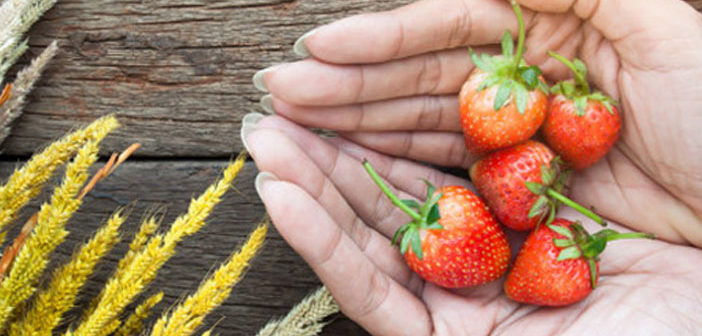With the arrival of spring, we now have warmer, longer days together with the chance to enjoy a variety of fresh produce. With springtime fruits and vegetables available in plenty, it’s time to spring-clean your eating habits by replacing the heavy fall and winter foods with fresh, in-season produce. When you visit the farmers’ market or the local store, look out for these ten nutritious foods to boost your energy, shed a few pounds and enjoy overall good health this spring.

Asparagus
Louis XIV of France called it the “food of kings.” With its rich fiber content together with being low fat and a rich in B vitamins, iron, and vitamin C, it surely has a royal nutritional profile. The availability of these tender stalks peaks from March through June though you can get them round the year. Since asparagus deteriorates quickly after it’s harvested, you should store it in a cool place to retain its nutritious value and freshness. You can grill, roast or sauté these seasonal spears in olive oil for making an appetizing addition to your meal.

Strawberries
Despite their peak season being from April to June, you can get strawberries available in most regions of the country round the year. A solitary cup of these sweet, juicy berries would give you 3.5 grams of fibre apart from meeting your daily vitamin C requirements completely, making strawberries nutritional jewels in the true sense. To enjoy the best flavor, it’s ideal to buy local strawberries as they tend to be fresher and undergo less damage than those in transit that are brought from faraway places. While shopping for strawberries, make sure the ones you buy are firm, plump, uniformly colored and well shaped. Apart from using them as sweet additions to your dressings or salads, you may even have them as a main meal. By being a light dessert, strawberries bring good news for weight watchers having a sweet tooth.

Sweet Cherries
You’ll get these juicy sweet cherries only during early summer and late spring. So, make sure you don’t lose out on enjoying sweet cherries that are potassium- and fibre-rich, but have low-calorie content, with a cupful giving you just about 100 calories. Anthocyanin – a kind of water-soluble phytochemicals (plant chemicals), which are rich in antioxidants, give these cherries their intense color. Your best buy would include large sized cherries (with a diameter of an inch or more) that are firm, plump and rich in color. You can eat these delicious cherries as a dessert or snack.

Peas
Throughout the year, you will find fresh peas including green peas, snow peas and sugar snap peas available, but their peak period is from April through July. Peas – similar to most legumes, are fiber- and protein-rich (plant protein), while being low in fat. Based on variety, they have different nutritional profiles, with green peas offering more zinc and B vitamins, while snap and snow peas provide more vitamin C. Peas can be ideally eaten as crudités tossed in salads, with dips, or as a side dish.

Radishes
If you need an explosion of flavor with minimal calories, the radish is your ideal choice. Based on its variety, this root vegetable comes with a distinctive flavor that can vary from sharp to mild. You can meet 30% of your daily requirement of vitamin C from a lone cup of red radishes (sliced), which contains less than 25 calories. While buying radishes, you should pick the deep colored ones with solid roots, and use them to make your condiments, soups, and cooked meals more delicious. You may even add the green tops to your salads for a spicy taste.

Fava Beans
Thanks to their rich flavor, these beans act as ideal additions to your salads, soups, or main dishes. Eating fava beans would keep you feeling fuller for longer as they are rich in fiber and protein. You can shell the young fava beans and consume them in their cooked or raw form, but the more mature varieties need to be shelled and skinned, since their tough skins are difficult to eat.

Morel Mushrooms
These are cone-shaped, springtime delicacies having a soft texture, which are available at the farmers’ markets and fine dining restaurants from early spring until late June. These wild mushrooms belong to the truffle family, and are popular for their nutty taste and honeycomb texture. Thanks to their spongy texture, morel mushrooms are ideal for soaking up tasty sauces. You can pair them with other spring vegetables such as green peas, spring onions and asparagus, or toss them in sautés, pastas and salads.

Apricots
If you need a food that packs a punch with its potassium, beta-carotene, fiber and vitamin C content in a sweet bundle that has just 50 calories, you just can’t think about anything but apricots. This fresh fruit’s peak season is between May and August. You can use apricots in your snacks, sandwiches, salads, salsas and jams to make them a little sweeter and mouth-watering.

Artichokes
Though these are harvested round the year, their peak is from March through May. By consuming a 2-ounce serving of artichokes (which is about the size of a large artichoke’s base), you will get almost 3 grams of fiber with only 25 calories. Additionally, artichokes are a good source of potassium, iron, vitamin C, folate and magnesium. From tossing them in your salads or pastas, to baking them or serving them in dips, you can enjoy artichokes in various ways.

Rhubarb
Despite being a vegetable technically, rhubarb is frequently used as a fruit. It’s a good source of manganese, potassium and vitamin C. Rhubarb stalks (which are the plants’ only parts that you should eat) are extremely tart but when you sweeten them, they would add a rich texture and flavor to your pies and sauces. You can also dice, blanch and add rhubarb to salads and salsas. Though some locations have rhubarb available round the year, the peak time for the yield of field-grown varieties is from April until July.
If you need to give your eating habits a proper cleanse this spring, make sure to have these ten foods on your plate.





